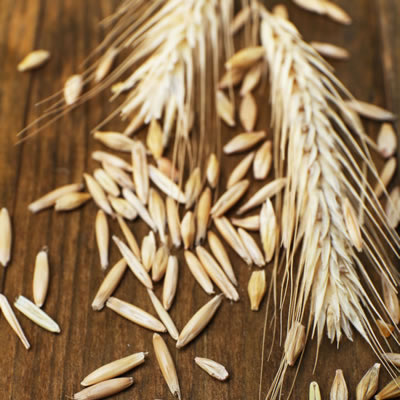Origin
Rye (Secale cereale), a member of the grass family (Gramineae), is closely related to wheat which has been cultivated since the Neolithic period. It is grown as a winter crop under harsh conditions and accounts for less than 1% of global cereal production.1
About 65% of the rye is harvested in eastern Europe (Russia, Poland, and Germany) due to its adaptation to harsh winters and poor soils. In these regions, rye flour is usually mixed with wheat flour for the production of traditional breads.1
Function
In baking, rye flour has been traditionally used in the production of flat breads and yeast-leavened breads. Such breads can vary in crumb color from practically white to dark-brown, in shape from round to elongated, and in taste from a mildly sour to a strong distinctive acidic.
This flour is preferred for the production of sourdough starters and artisan breads, especially in Germany, Poland, Ukraine, and other European countries. Te grain is also used to produce alcoholic beverages.
Commercial production
The rye kernel is more pointed and longer than wheat and barley. Like other cereals, it is composed of starchy endosperm (86.5%), bran (10%), and the germ (3.5%).
Milling rye flour follows the same process principles as those of wheat. Rye and triticale usually have a softer endosperm compared to hard or durum wheat and therefore are tempered to lower moisture contents.
Nutrition
Generally, rye flour has less starch and protein but more fiber and free sugar compared with wheat. Its protein content is comparable to other cereals.
Composition of rye kernel2,3
| Constituent | Content (%) |
|---|---|
| Starch | 57.0 – 65.6 |
| Non-starch polysaccharides (NSPs) | 13.0 – 15.0 |
| Arabinoxylans | 6.5 – 12.2 |
| Mixed-linkage β-glucans | 1.5 – 2.6 |
| Cellulose | 2.1 – 2.6 |
| Fructans | 4.6 – 6.6 |
| Protein (globulins, albumin, prolamins and glutelins) | 8.0 – 17.7 |
| Lipids | 2.0 – 2.5 |
| Minerals | 1.7 – 2.2 |
Rye flour should not be used to bake gluten-free products, from an allergenic viewpoint.
Application
Historically, rye flour has been known as “poor man’s wheat flour.” Rye’s breadmaking performance is markedly lower than that of wheat. When rye flour is in bread, several formula adjustments are needed to produce acceptable product volume and texture.
The lower breadmaking quality of rye flour lies in its protein composition. Rye prolamins (secalins) behave quite differently from wheat prolamins in baking, as they are not able to create comparable amounts of polymeric proteins to form a continuous viscoelastic gluten-type network as in wheat baking. As a consequence, the structure of rye bread is very different from that of wheat bread.
Cell walls and their polysaccharides have an important role in whole-meal rye bread baking. Arabinoxylans are the main water-binding polymers in rye dough and are thus important for rye dough rheology and gas retention properties.
Rye bread
Rye bread is typically prepared without addition of fat, milk, or sugar, and only some special types may contain sugar or syrup. Baking with rye differs considerably from wheat. Usually, rye dough is sticky and difficult to handle during baking, and the resulting bread texture is dense and hard.
Some rye bread formulas often call for a 50/50 blend of rye and wheat flour to help increase the strength of the gluten. In North America, rye bread typically contains about 20% rye flour to impart additional flavor and to add color. In Europe, it is more common to see bread loaves made from 100% of this flour.
Rye breads are denser, more moist than their wheat counterparts. Rye bread is usually made of whole-grain rye flour; thus, the dietary fiber content in the final bread is high i.e. approximately 10 g/100 g, delivering approximately 2.5 g per serving of 25 g.
References
- Arendt, E.K., and Zannini, E. “Rye.” Cereal Grains for the Food and Beverage Industries, Woodhead Publishing Limited, 2013, pp. 220–243.
- Verwimp, T., Courtin, C.M., and Delcour, J.A. “Rye Constituents and Their Impact on Rye Processing.” Food Biochemistry and Food Processing, 2nd edition, John Wiley & Sons, Inc., 2012, pp. 654–671.
- Poutanen, K., and Åman, P. Rye and Health, AACC International, Inc., 2014, pp. 1–46.
- U.S. Food and Drug Administration. “CFR – Code of Federal Regulations Title 21.” Accessdata.fda.gov, https://www.accessdata.fda.gov/scripts/cdrh/cfdocs/cfcfr/CFRSearch.cfm?fr=101.91

